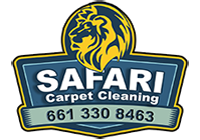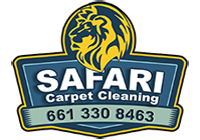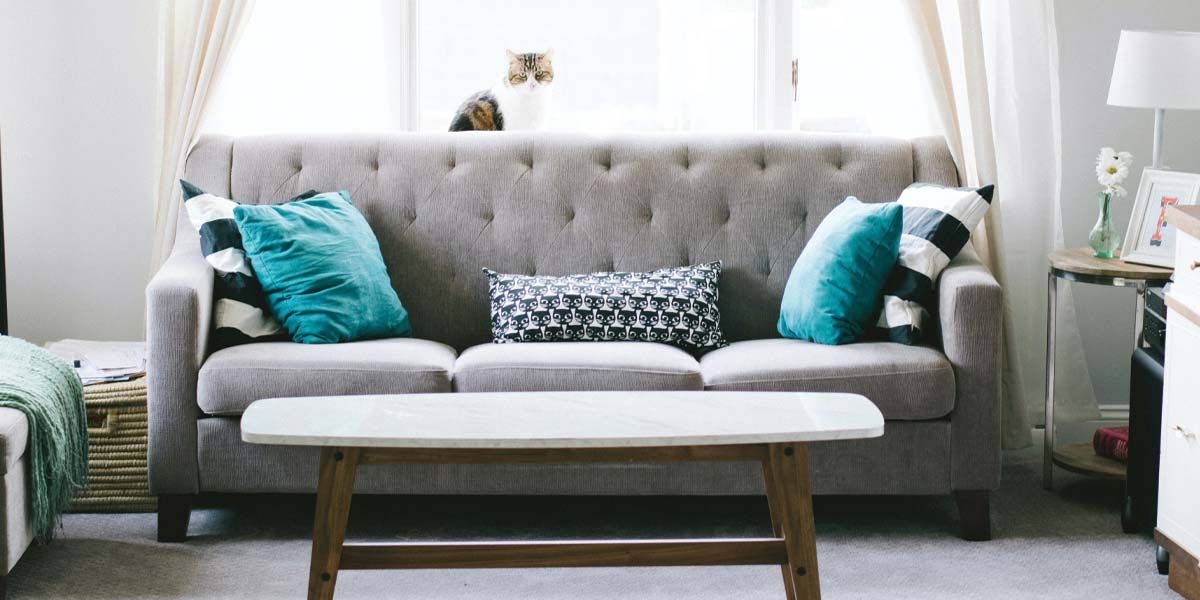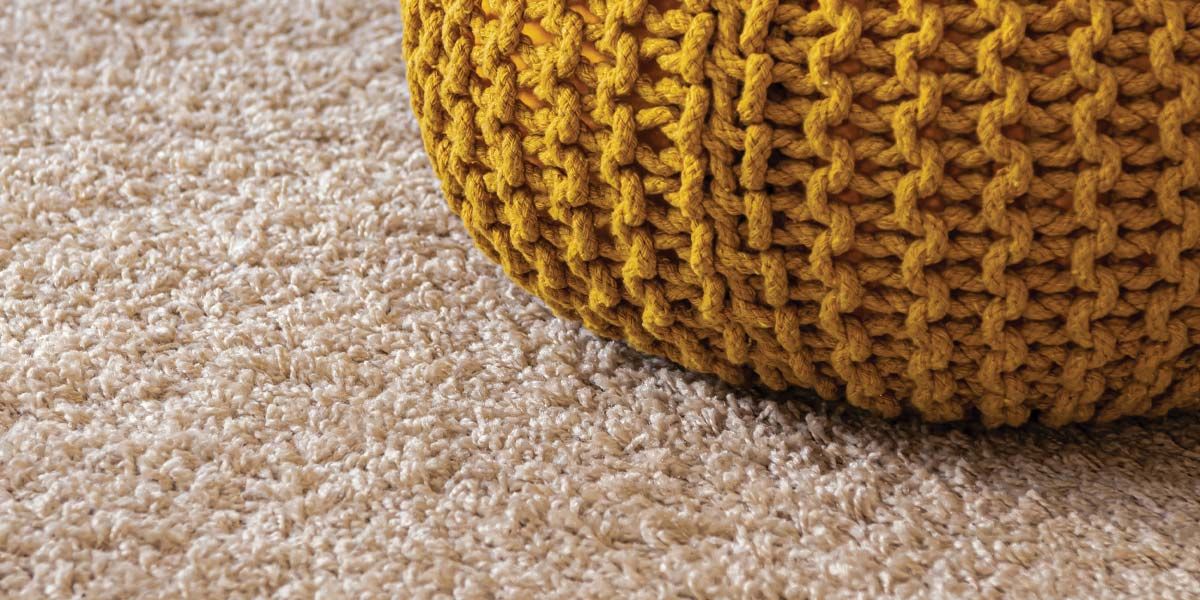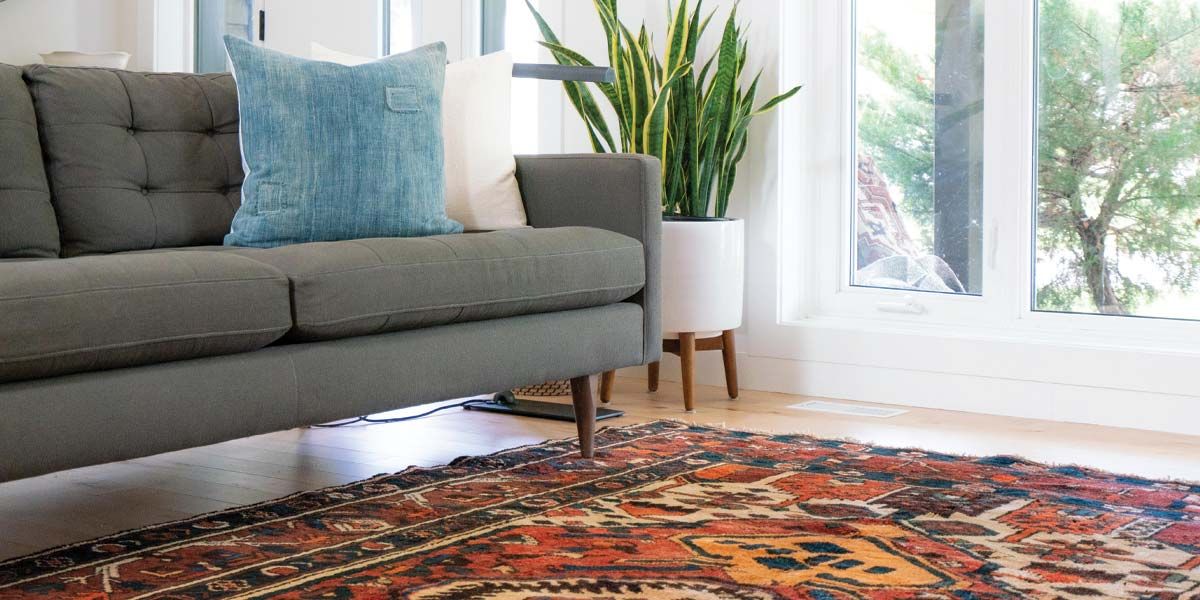The Fabric of Clean: Mastering Upholstery Maintenance
The Fabric of Clean: Mastering Upholstery Maintenance

This comprehensive introduction will discuss the basics of the various types of fabrics used for upholstery, and how to properly care for them. Further on, it will discuss how to go about removing stains from upholstered furniture, and the importance of striking a balance between deep cleaning and daily maintenance. Finally, it will discuss the possible need for professional upholstery cleaning, and when it may be necessary.
The Basics of Upholstery Fabric Types and Their Care
Upholstery fabric is a material used for furniture upholstery and window treatments, and it bears the weight of its purpose. Upholstery fabric can be made of many types of fibers, which provide different levels of durability and stain resistance. However, all fabrics require specific care and cleaning to preserve their look and feel.
The three most common types of upholstery fabrics are leather, microfiber, and natural fibers. Leather, being the most expensive of the fabrics, is highly desirable in upholstered furniture and is a common choice for high-traffic areas. Leather provides a classic look along with durability, but requires specific care with specialized products to maintain its integrity. Microfiber is one of the most versatile upholstery fabrics on the market, and is less expensive than leather. It is well suited for households with children or pets, due to its stain-repellent properties. Natural fibers are often combined with synthetic fibers for a more durable, softer feel. Silk, linen, and cotton are popular natural choices, but should be dried clean, or professionally cleaned.
In addition, specialty fabrics such as Sunbrella and Crypton are also gaining popularity. These fabrics are engineered for strength and stain resistance, which make them an attractive choice for families and pet owners. Sunbrella is a solution-dyed acrylic fabric that is stain-resistant, water-resistant, and fade-resistant. Likewise, Crypton is an engineered fabric that is known for its 100% impermeable quality, which resists moisture, stains, and odor. Therefore, furniture upholstered with these fabrics require little care and routine maintenance, making them a quality choice for many homeowners.
Finally, upholstery fabric can range from economical to high-end, and should always be chosen based on the customer’s needs and desires. Store-bought fabric or upholstery protection products can help maintain fabrics in high-traffic areas. Additionally, professional cleaners can help remove watermarks or stubborn stains. The use of proper care and cleaning techniques can help maintain the beauty and lifespan of most upholstery fabrics. Consequently, being knowledgeable about the types of fabrics, and their care, can help consumers make an informed purchase decision.
Stain Removal In Upholstered Furniture: Tackling the Most Common Culprits
Stain removal in upholstered furniture can be a tricky process, but one that’s worth tackling. Different stains require different strategies, but there are a few techniques that work particularly well for common offenders.
One of the most common types of stains in upholstered surfaces is food and beverage spills. Water, club soda, and organic solvents such as alcohol, are tried and true for removing these stains. Saturate the surface of the spill, but avoid over-wetting the furniture, as this can cause mold or mildew. Blot up the moisture with a clean towel, but never rub the area as this can damage the surface.
On the other hand, removing oil based stains such as makeup requires a different approach. In this case, dry solvents are best: lighter fluid or mineral spirits are great choices. Apply the dry solvent to the affected area with a cotton pad and rub gently. Once the stain is removed, it’s important to wash the solvent off by blotting with a cloth dampened in a damp sponge with a mild detergent and water.
Similarly, when removing ink-based stains such a ballpoint pen or magic marker, begin by applying a mild solvent such as rubbing alcohol or hair spray to the spot. Then wipe off with an absorbent cloth or paper towels. Afterward, rinse the area with a cloth dampened in a mild detergent and water.
In contrast, removing pet stains takes a bit more effort. Begin by blotting the area, being careful to not press down too hard as this could cause the stain to spread. Then, mix a solution of detergent and vinegar, being sure to keep the ratio 50/50. Using a soft brush, rub the solution into the stain and leave for about 30 minutes, before blotting up any remaining liquid. As a result of this process, the stain should be much lighter.
Finally, mud and other solid debris need to be approached with a bit of care. Carefully scrape away excess debris with a spoon, then apply a mild detergent solution and gently rub the affected area. Rinse the area with a clean, damp cloth and then blot to dry.
Consequently, by utilizing the correct processes for stain removal, it is possible to successfully remove almost any stain from upholstered furniture. The important thing is to react quickly after noticing the stain and to always use the appropriate products and techniques for the type of stain.
Deep Cleaning vs. Daily Maintenance: Striking the Right Balance
Striking the right balance between deep cleaning and daily maintenance is crucial for maintaining a healthy home; however, it can be difficult to know the difference. Deep cleaning is typically an intensive cleaning that is used to restore the condition of a home, or part of a home such as a kitchen or bathroom, after it appears to have become visibly dirty. It involves moving furniture around and using a steam cleaner or high-pressure washer for a thorough clean. Daily maintenance involves regular surface-level cleaning; while it is not as time consuming less as deep cleaning, it still requires consistency and upkeep.
Moreover, how often one performs deep or daily cleaning also plays an important role in maintaining a healthy home. For instance, a deep cleaning should be done every 3-4 months to remove any stubborn dirt or stained spots that may have built up over time. On the other hand, daily maintenance, like wiping clean counters and vacuuming, should be done at least once a week. It is also important to note that daily maintenance is an important part of deep cleaning; performing routine maintenance helps to reduce the amount of deep cleaning one has to do.
Similarly, the specific products used also affect the difference between deep cleaning and daily maintenance. Deep cleaning may require products that are more effective at breaking up tough stain and debris, such as an alkaline or acidic cleaner, while daily maintenance may require products such as detergents for general surface-level cleaning. Furthermore, when deep cleaning, products should be applied with adequate protection such as waterproof boots, face mask, and gloves, to protect oneself from the harsh chemicals.
In contrast, daily maintenance should involve the use of products that are less intense, contain natural ingredients, and are safer to use, helping to keep away any dust, dirt, and potential contaminants. As a result, striking the right balance between deep cleaning and daily maintenance is important in order to maintain a healthy home; deep cleaning should be done periodically to clean deep rather than leaving it up to daily maintenance. Additionally, one should use the appropriate products for each cleaning task to ensure safety and optimal cleaning. Consequently, striking the right balance between deep cleaning and daily maintenance is key to maintaining a happy, healthy home.
Professional Upholstery Cleaning: When to Seek Expertise
Professional Upholstery Cleaning is an important task that goes beyond simply removing dust and dirt. If upholstery isn’t cleaned and maintained correctly, it could become stained or irreparable. It’s vital to keep upholstery clean, both for aesthetic and functional purposes, to maintain its quality and to prevent it from becoming unsightly or damaged. Therefore, understanding when to seek professional expertise can help ensure that upholstery lasts as long as possible.
On the other hand, regular cleaning and care should generally prevent the need for professional expertise. For instance, some material might benefit from weekly vacuuming to remove surface dirt and dust, such as cotton and wool fabrics. Similarly, it’s also important to immediately clean spills before they penetrate into the fabric or upholstery and cause permanent stains.
Moreover, fabric upholstery should also be treated with caution. For instance, leather needs to be washed and conditioned with specialised products to maintain its attractive appearance. Similarly, suede and velvet also require specialist products and techniques to clean and protect against damage.
In addition, it’s essential to ensure that the cleaning products and equipment are appropriate for the particular type of upholstery. For instance, not all upholstery cleaning products are suitable for every type of fabric, so you must ensure that you use the correct ones. Furthermore, professional cleaners have access to increasingly advanced cleaning solutions and specialist equipment, such as powerful vacuums, making them able to provide a more thorough clean.
In contrast, you must be careful to not make the situation worse by attempting to clean upholstery yourself. For instance, some cleaning solutions may cause damage to upholstery if used incorrectly, so it’s best to seek professional expertise to ensure it’s done safely. As a result, if you’re looking to significantly clean and refresh upholstery, it’s important to consult a professional upholstery cleaner.
Consequently, professional upholstery cleaning is a vital task to keep furniture and upholstery in good condition for as long as possible. Understanding when to seek professional expertise can help ensure upholstery remains clean and free from damage.
Safari Is Here For Your Upholstered Needs
When it comes to the care of upholstered furniture, knowledge of the type of fabric used in the piece is essential. Different fabrics require different cleaning methods, with some being suitable for both spot cleaning and deep cleaning while others respond better to more intensive methods. For those hard-to-tackle stains, both home remedies and store-bought products can be used, and even for stubborn stains, professional help is available. Finding the right balance between deep cleaning and daily maintenance is important to keeping the fabric looking its best, so regular vacuuming, spot cleaning, and using the correct cleaning products can ensure a piece of furniture lasts for years.
FAQ
What are the best DIY solutions for cleaning common upholstery fabrics?
For most common upholstery fabrics, a mixture of warm water, a few drops of dish soap, and a small amount of white vinegar can be an effective cleaning solution. Make sure to always spot-test any DIY solution on an inconspicuous part of the upholstery to check for colorfastness. For more delicate fabrics like silk or vintage materials, it’s best to avoid DIY methods and consult a professional.
How often should I consider deep cleaning my upholstered furniture?
It’s generally recommended to deep clean upholstered furniture every 12-24 months. However, this can vary depending on usage and exposure to potential stains or pollutants. Furniture in homes with pets, children, or smokers might require more frequent cleaning. It’s also a good practice to vacuum your upholstered furniture monthly to remove surface dirt and debris.
Which types of stains are the most challenging to remove and how can I address them?
Some of the toughest stains to tackle on upholstery include red wine, coffee, ink, and pet stains. For red wine, blot the spill immediately with a clean cloth, then apply a mixture of dish soap and cold water. Blot until the stain lifts. Coffee stains can be treated similarly. For ink stains, consider using isopropyl alcohol, but always test on a hidden spot first. Pet stains require immediate blotting, followed by a mixture of white vinegar and warm water. For stubborn or old stains, it might be best to seek professional cleaning services.
Is it safe to use household cleaners on my upholstery or should I stick to specialized products?
It’s crucial to be cautious when using household cleaners on upholstery. Many contain chemicals that can discolor or damage fabrics. Always conduct a spot-test if you’re considering a household product. Generally, it’s safer to use products specifically designed for upholstery cleaning, as these are formulated to be gentle on fabrics while effectively lifting stains.
Call Safari Carpet Cleaning in Bakersfield today for service!
